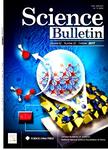版权所有:内蒙古大学图书馆 技术提供:维普资讯• 智图
内蒙古自治区呼和浩特市赛罕区大学西街235号 邮编: 010021

作者机构:International Research Center for Renewable Energy State Key Laboratory of Multiphase Flow in Power Engineering Xi'an Jiaotong University Xi'an 710049 China Department of Physics Tamkang University Tamsui 25137 Taiwan China
出 版 物:《Science Bulletin》 (科学通报(英文版))
年 卷 期:2019年第64卷第17期
页 面:1262-1271页
核心收录:
基 金:financially supported by the National Natural Science Foundation of China (21875183, 51672210 and 51888103) the National Program for Support of Top-notch Young Professionals the ‘‘Fundamental Research Funds for the Central Universities”
主 题:Photoelectrochemical Water splitting Hematite nanorods Photoanodes Surface sulfurization
摘 要:Surface treatment is an effective method to improve the photoelectrochemical(PEC) performance of photoelectrodes. Herein, we introduced a novel strategy of surface sulfurization to modify hematite(a-Fe2 O3)nanorods grown in an aqueous solution, which triggered encouraging improvement in PEC *** comparison to the solution-grown pristine a-Fe2 O3 nanorod photoanode that is PEC inefficient and always needs high temperature(600 °C) activation, the surface sulfurized a-Fe2 O3 nanorods show photocurrent density increased by orders of magnitude, reaching 0.46 mA cmà2 at 1.23 V vs. RHE(reversible hydrogen electrode) under simulated solar illumination. This improvement in PEC performances should be attributed to the synergy of the increased carrier density, the reduced surface charge carrier recombination and the accelerated water oxidation kinetics at the a-Fe2 O3/electrolyte interface, as induced by the incorporation of S ions and the formation of multi-state S species(Fe-Sx-Oy) at the surface of a-Fe2 O3 nanorods. This study paves a new and facile approach to activate a-Fe2 O3 and even other metal oxides as photoelectrodes for improved PEC water splitting performances, by engineering the surface structure to relieve the bottlenecks of charge transfer dynamics and redox reaction kinetics at the electrode/electrolyte interface.